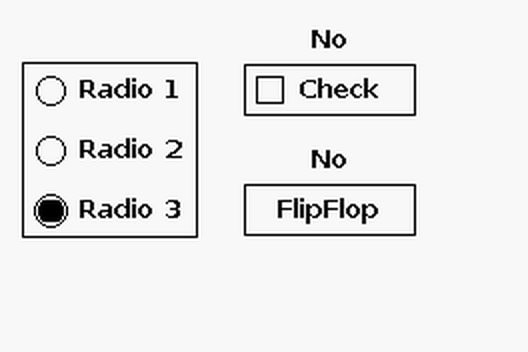hV_GUI — Button
|
The syntax of define allows multiple options:
Parameters of define are
Note the short and the long syntaxes. The size of the button is defined as a vector with
|
|
|
The funciton enable() makes the button active, and draw() draws it on the screen.
|
|
|
In the main loop, the button is checked.
|
|


